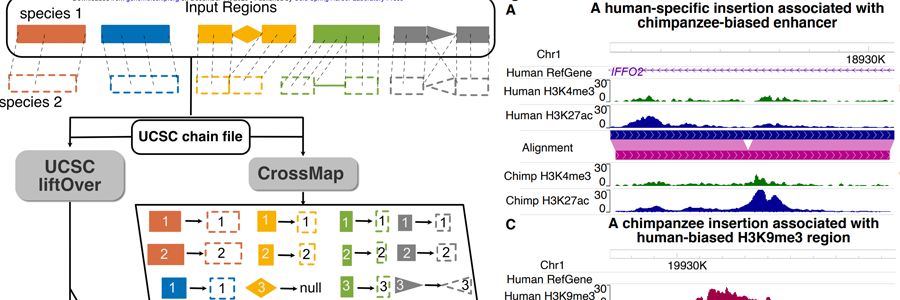Abstract:
Structural variation (SV), including insertions and deletions (indels), is a primary mechanism of genome evolution. However, the mechanism by which SV contributes to epigenome evolution is poorly understood. In this study, we characterized the association between lineage-specific indels and epigenome differences between human and chimpanzee to investigate how SVs might have shaped the epigenetic landscape. By intersecting medium-to-large human-chimpanzee indels (20bp-50kb) with putative promoters and enhancers in cranial neural crest cells (CNCC) and repressed regions in induced pluripotent cells (iPSC), we found that ~12% indels overlap putative regulatory and repressed regions (RRRs), and 15% of these indels are associated with lineage-biased RRRs. Indel-associated putative enhancer and repressive regions are ~1.3 and ~3 times as likely to be lineage-biased, respectively, as those not associated with indels. We found a 2-fold enrichment of medium-sized indels (20bp to 50bp) in CpG island (CGI)-containing promoters than expected by chance. Lastly, from human-specific transposable element insertions, we identified putative regulatory elements, including NR2F1-bound putative CNCC enhancers derived from SVAs and putative iPSC promoters derived from LTR5s. Our results demonstrate that different types of indels are associated with specific epigenomic diversity between human and chimpanzee.





